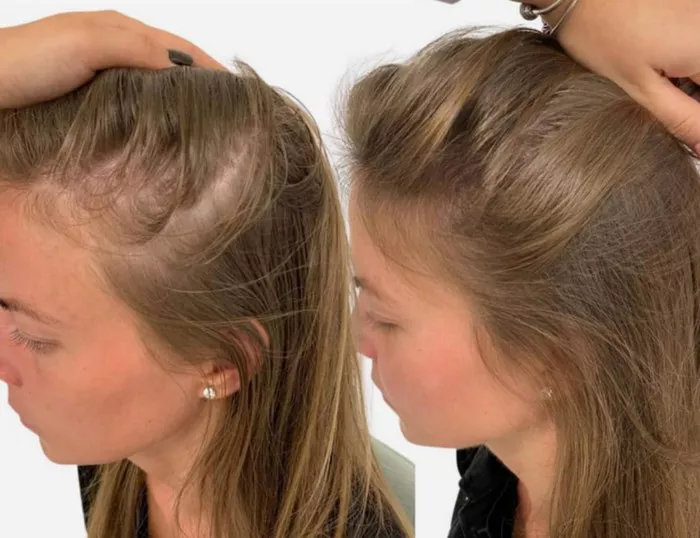Undergoing a hair transplant can be a life-changing decision, offering a long-term solution for hair loss. However, the recovery process comes with its own set of rules, including concerns about physical activity and sweating. One common question among patients is, “When can I start sweating after my hair transplant?” This article will explore the recovery timeline, factors affecting sweating, and tips for a smooth healing process.
Understanding Hair Transplantation
What is a Hair Transplant?
A hair transplant is a surgical procedure that redistributes hair follicles from a donor area (usually the back or sides of the scalp) to areas with thinning or no hair. The two most common techniques are:
Follicular Unit Transplantation (FUT): A strip of scalp is removed, and individual follicular units are dissected and implanted in the thinning areas.
Follicular Unit Extraction (FUE): Individual hair follicles are extracted directly from the scalp without the need for a linear incision.
Why is Recovery Important?
Recovery is a critical phase following a hair transplant. Proper care during this time can significantly impact the success of the procedure. One key aspect of recovery is managing activities that could disrupt the healing process, such as sweating.
The Healing Process
Initial Healing Phase
After your hair transplant, the initial healing period typically lasts for about 7 to 10 days. During this time, the following occurs:
Scabs Forming: Tiny scabs will form over the transplanted follicles. It’s essential to avoid dislodging these scabs.
Swelling and Redness: Some patients may experience swelling, particularly around the forehead and eyes.
Sensitivity: The scalp may feel sensitive, and some discomfort is common.
See Also: Combing Your Hair After a Hair Transplant: When to Do It
The Importance of Avoiding Sweat
Sweating can pose risks during the initial healing phase:
Dislodging Grafts: Sweat can irritate the scalp and potentially dislodge the newly transplanted hair follicles if they haven’t fully settled.
Infection Risk: Sweat can introduce bacteria to the scalp, increasing the risk of infection.
When Can You Start Sweating?
General Guidelines
First Week:
It is generally recommended to avoid sweating for at least the first week post-transplant. This includes avoiding vigorous exercise, saunas, and hot baths.
Physical Activity: Light walking is usually permissible, but anything that raises your heart rate significantly should be avoided.
Week Two:
After 7 to 10 days, many patients can begin to gradually resume normal activities, including light workouts.
It’s still advisable to avoid excessive sweating. Activities that cause intense sweating should be introduced cautiously.
Week Three and Beyond:
By the third week, most patients can return to their regular exercise routines, including activities that may cause sweating.
However, it’s important to listen to your body. If you feel any discomfort, it’s wise to take it easy.
Factors That May Affect Sweating After Surgery
Several factors can influence how soon you can start sweating after a hair transplant:
Type of Procedure:
FUE and FUT have different recovery timelines. FUE may allow for a slightly quicker return to normal activity since it is less invasive.
Individual Healing:
Everyone heals at different rates. Factors such as age, overall health, and adherence to post-operative care can impact recovery.
Surgeon’s Advice:
Always follow the post-operative instructions provided by your surgeon. They will tailor recommendations based on your specific situation.
Tips for a Smooth Recovery
1. Follow Post-Operative Instructions
Your surgeon will provide guidelines for care after your hair transplant. Adhering to these instructions is critical for achieving the best results.
2. Stay Hydrated
Drinking plenty of water can help support your body’s healing process. Staying hydrated may also reduce swelling.
3. Avoid Sun Exposure
Protect your scalp from direct sunlight, especially during the first few weeks. Consider wearing a loose hat when outdoors.
4. Be Mindful of Your Activities
As you approach the second week of recovery, ease back into exercise gradually. Start with light activities and listen to your body. If you experience any pain or discomfort, stop and rest.
5. Keep the Scalp Clean
After the initial healing phase, gently wash your scalp as recommended by your surgeon. Keeping the area clean can help prevent infection.
Signs of Complications
While most patients experience a smooth recovery, be on the lookout for signs of complications:
Increased Redness or Swelling: Some swelling is normal, but if it increases significantly, contact your surgeon.
Severe Pain: If you experience pain that is not manageable with prescribed medication, consult your healthcare provider.
Fever: A fever may indicate an infection, requiring immediate attention.
Conclusion
In summary, it is advisable to avoid sweating for at least the first week after a hair transplant to protect the newly implanted follicles and reduce the risk of complications. By the second week, you can gradually reintroduce light activities, eventually returning to your regular exercise routine by the third week. Always follow the advice of your surgeon, as they will provide personalized guidance based on your unique situation.
With proper care and patience during the recovery process, you can look forward to achieving the desired results from your hair transplant. Your journey to fuller hair will be well worth the wait!
You Might Be Interested In
- Understanding Numbness After Hair Transplant
- Do You Have to Shave Your Head for a Hair Transplant?
- Can a Hair Transplant Fix Your Hairline?


